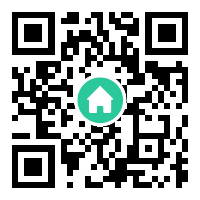Telegram channels have emerged as a powerful tool for information sharing, community building, and real-time communication in the digital age. Unlike traditional social media platforms, these channels offer a unique blend of privacy, scalability, and flexibility, making them a preferred choice for individuals, organizations, and activists worldwide. From news dissemination to niche hobby groups, Telegram channels cater to diverse audiences while maintaining a user-centric approach. This article explores the multifaceted role of Telegram channels, their impact on modern communication, and the challenges they face in an increasingly regulated online ecosystem.
The Rise of Telegram Channels
Telegram channels gained prominence as alternatives to mainstream platforms due to their encrypted messaging framework and absence of algorithmic content manipulation. Launched in 2015, these broadcast-style platforms allow administrators to share text, media, and files with unlimited subscribers while retaining control over participation. During global events such as political protests or the COVID-19 pandemic, Telegram channels became vital hubs for uncensored updates, demonstrating their ability to operate under restrictive regimes. The platform's emphasis on privacy—featuring self-destruct timers and anonymous posting options—has attracted users seeking refuge from data-harvesting practices common on other social networks.
Functionality and Customization
What sets Telegram channels apart is their versatile toolkit for creators. Administrators can enable granular controls, including comment sections for public discussions or restricted "read-only" modes. Advanced features like pinned messages, hashtag categorization, and cross-channel integration enable sophisticated content strategies. Bots further enhance functionality, automating tasks such as subscription management, polls, and payment processing. For businesses, Telegram channels serve as cost-effective CRM tools, offering direct access to customers through broadcast lists and targeted announcements. Educational institutions and NGOs similarly leverage these channels for mass communication without compromising user data.
Privacy vs. Accountability
While Telegram's encryption protocols protect user anonymity, they also create challenges in content moderation. The platform's hands-off approach has enabled both whistleblowers and malicious actors to operate freely. Governments worldwide have raised concerns about the spread of misinformation, illegal trade, and extremist content through unregulated channels. Telegram's response—implementing limited moderation while maintaining core privacy principles—highlights the delicate balance between free speech and societal responsibility. Recent updates introducing verified badges and reporting mechanisms reflect attempts to address these concerns without undermining the platform's foundational values.
Monetization and Sustainability
Unlike many social platforms, Telegram channels initially lacked built-in monetization features, pushing creators to develop third-party solutions. The 2021 introduction of ad revenue sharing and premium subscription models marked a strategic shift. Creators can now earn through sponsored posts, affiliate marketing, and exclusive content tiers. This economic model has fueled professionalization, with some channels generating six-figure incomes. However, the absence of robust analytics tools compared to competitors like YouTube or Substack limits data-driven growth strategies. The platform's recent experiments with blockchain-based payments and NFT integrations suggest ambitions to pioneer decentralized creator economies.

Global Impact and Cultural Shifts
Telegram channels have fundamentally altered information consumption patterns in multiple regions. In countries with state-controlled media, these channels function as parallel news ecosystems—Iran's 2022 protests saw activists coordinating through encrypted broadcasts. Meanwhile, niche communities spanning quantum physics enthusiasts to vintage car collectors have found dedicated spaces for knowledge exchange. The platform's role in cryptocurrency communities—where channels drive token launches and market discussions—exemplifies its influence on emerging industries. This global yet hyper-localized reach positions Telegram channels as microcosms of internet culture, reflecting both universal trends and regional particularities.
Future Challenges and Opportunities
As Telegram channels approach a decade of operation, they face evolving challenges. Regulatory pressures, competition from emerging platforms, and technological advancements in AI moderation will shape their trajectory. The platform's potential integration with Web3 technologies and metaverse environments could redefine user interaction paradigms. Meanwhile, ongoing debates about content governance models may lead to fragmented regional implementations of Telegram's services. What remains certain is that these channels will continue evolving as both mirrors and molders of digital society—offering unprecedented communication capabilities while testing the boundaries of digital citizenship.
From grassroots movements to Fortune 500 companies, Telegram channels have cemented their position as indispensable tools in the modern information landscape. Their growth story underscores a broader shift toward user-controlled platforms prioritizing functionality over flashy interfaces. As digital communication continues evolving, Telegram channels serve as both a blueprint and cautionary tale for balancing innovation with ethical responsibility in the age of connected communities.












